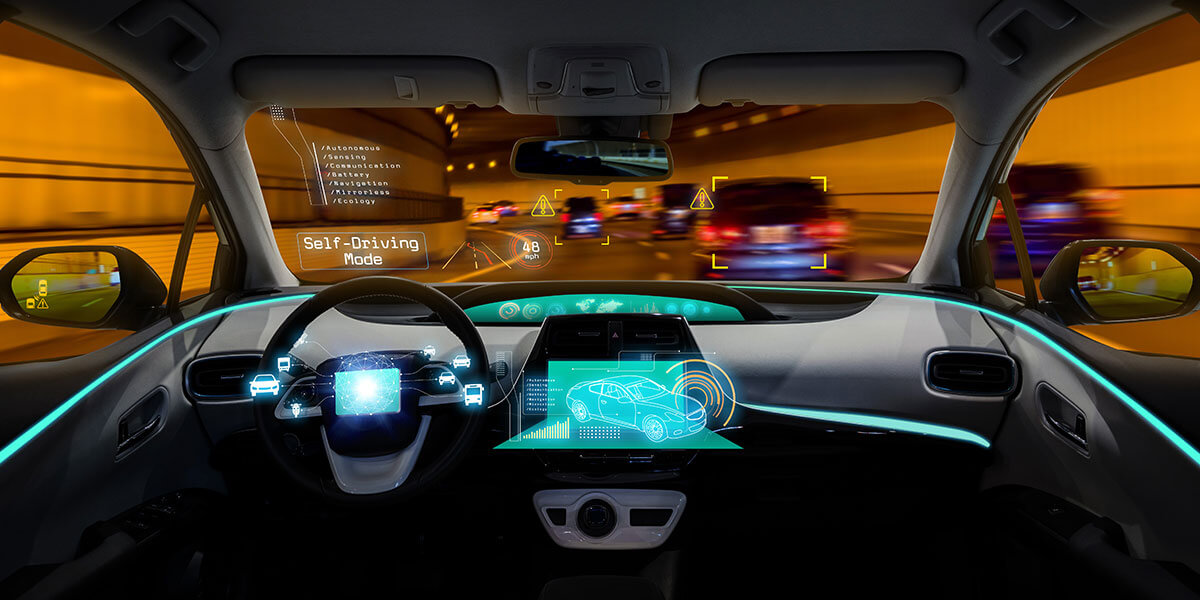The scope of in-vehicle communication is expanding and so is the evolution of automotive electrical/electronic (E/E) architecture towards software-oriented design. Increasing demands for sophisticated electronic features in vehicles are driving the transition from conventional mechanical design to future-ready digital automotive experiences. Then again, this innovation often results in increased cost and complexity of the current vehicle E/E architecture.
We ascertained the opinions of Siddharth Jaiswal, Automotive Practice Lead at Netscribes, about the industry’s current challenges and future innovations in E/E architecture that will enable automakers and other key industry players to explore exciting opportunities in the ecosystem.
1. How is the vehicle E/E architecture evolving as the industry moves towards a V2X environment and an autonomous future?
Siddharth: The automotive industry is at a crucial crossroads. The current vehicle architecture will no longer be able to accommodate the growing electronic content, let alone a future where vehicles communicate with everything or an autonomous world. It’s quite simple: all OEMs are in a race to offer cutting-edge features in the field of safety, comfort, or connectivity to gain a competitive advantage. However, each new feature comes with its ECU box, embedded software, and wiring harness. This, later, integrates into the vehicle architecture. This patchwork approach is no longer sustainable and economical. It’s a designer’s nightmare to place as many as 100-130 ECU boxes in the limited real estate of the vehicle.
All these challenges apply to the conventional ICE vehicle. If we consider V2X or an autonomous vehicle, this challenge quadruples. Hence, a change in vehicle E/E architecture is inevitable and from our research, the tipping point will be 2025 where the new architecture in the form of module consolidation will make its way into mass vehicle classes. This transition will take place in a phased manner. The industry will try to combine features based on functionality such as safety, comfort, engine, entertainment, etc. It will further set up shared hardware creating domain controllers.
Phase 1 has already started in certain pockets of the industry. It is expected to reach scale by 2025 with Aptiv, Visteon, and Continental leading the pack. The next phase of this transition could be a centralized architecture where a single supercomputer will manage all the vehicle functions which is ideal for the V2X applications. Finally, the third phase would be an architecture where a significant amount of vehicle computing would happen in the cloud. This, of course, will depend on how 5G evolves and performs and in turn, will be a good fit for autonomous vehicle application.
2. Electronic features in vehicles are becoming increasingly sophisticated. What challenges does this present to the current E/E architectures?
Siddharth: Well, the proliferation of electronics in vehicles is a function of regulatory push, forces of competition, cost economics, and consumer expectations. While regulatory bodies have a major role in pushing safe electronics into vehicles, consumer expectations have also changed drastically. Today, people want a smartphone-like experience from vehicles. All of this, along with the race towards autonomous vehicles has led to an explosion of electronics, software, and technology into vehicles.
For instance, the average number of ECUs per vehicle was 50-60 units in 2010. This has now increased to over 100-120 ECUs in 2020 owing to the adoption of ADAS, connected, and autonomous technologies. The existing architecture design is not suitable for such complex electronics and computation. Today, nearly 20-25% of the cars come with with SAE Level-2 autonomous technology and we expect 75-80% of autonomous vehicles to have this technology by 2030. This would increase the number of ECUs to over 250-300 analyzing 20-40Mb data points per second while churning out 10-12GB data per day. It’s nearly impossible to have such a high number of ECUs and processing power with the current architecture.
Moreover, the increased complexity and computation required for such electronics will pose an immense burden on the existing architecture. If the past decade was a race for horsepower, the next decade will be determined by computation power.
3. With such high computing needs of future vehicles, automakers are actively seeking E/E solutions that can enable connected and autonomous cars. Will this also open opportunities for non-automotive digital companies in the ecosystem? How so?
Siddharth: Absolutely. From our interactions with OEMs, they are willing and open to embracing this transition. They acknowledge that such a shift is necessary to compete with the likes of Rivian or Tesla. These front runners have already developed a future-ready architecture not just for EVs but also for autonomous technology. Furthermore, we see immense cost benefits in shifting to a more centralized vehicle E/E architecture. From our data model, OEMs could achieve a cost rationalization of nearly USD 350-450 per vehicle. This is excluding the benefits of reducing weight and wiring harnesses.
The key issue is from the supply side. On one end of the spectrum, traditional tier-1 suppliers are still figuring out how and when they should invest in a new architecture. A few companies such as Aptiv, Visteon, and Mitsubishi Electric have already made some progress. Yet, the industry-wide direction is yet unclear. On the other hand, we have new-age companies such as QNX, ETAS, and OpenSynergy among others. These bring proven technologies from the field of IT and cloud computing to the automotive industry. However, they are yet to figure out a business model that fits well with the auto value chain.
The new E/E architecture makes for a strong business case with strong potential. However, it also has its set of challenges for both traditional auto companies and the new entrants.
4. Data throughput in vehicles will increase in the coming years and more software technologies will make way into cars. How will automakers revisit the current vehicle E/E architecture to accommodate the same?
Siddharth: In the next five years, data is going to create new revenue pockets and attract new mobility companies. As this creates a vibrant start-up ecosystem, business models of the traditional auto value chain will not be the same. From our research, nearly 3-4% of the industry revenue will incur from data monetization by 2030. Moving forward, it will be necessary to implement a robust data processing and transferring mechanism.
Automakers have struggled in figuring out how data can be gathered, stored, analyzed, and monetized. As vehicles communicate with a wider ecosystem and autonomous technologies begin to emerge, a typical AV will need a mechanism to transfer 40-50GB of data. Hence, the new architecture needs to accommodate advanced communication technologies. Ethernet, for instance, can transfer 100 Mbit per second as compared to the conventional CAN which can transmit just 1 Mbit per second.
Additionally, technologies such as hypervisors and other virtualization are being explored to ensure the highest level of safety and enable over-the-air (OTA) updates. These will help automakers reduce warranty costs, avoid expensive recalls, and increase customer satisfaction by reducing dealership visits.
5. How can established automakers and Tier-1 suppliers create innovative vehicle architectures that are scalable and flexible across vehicle platforms? And what is the market potential for the new architecture?
Siddharth: Automotive has always been a tight-margin industry. Hence, scalability is critical to achieving profitability in this highly competitive market. OEMs and tier-1 suppliers have already started exploring platforms that are purpose-built for EVs or autonomous vehicles. In the past few years, most of the industry had adopted a retrofit approach when it came to EVs or autonomous vehicles. Meanwhile, an ICE platform was retrofitted with an electric powertrain. It soon became apparent that this approach cannot be scaled, thereby resulting in the need for purpose-built platforms that can complement electric vehicles and autonomous vehicles.
From a vehicle E/E architecture perspective, a significant transition is expected in overall vehicle development philosophy right from prototype to design and finally commercialization. The traditional auto industry will have to move away from the conventional hardware-centric approach to a more software-defined agile approach. From our interactions with tier-1 companies, it’s largely a cultural issue. These suppliers have been operating in a certain way for the last 50-60 years. Change is bound to happen gradually. Most companies will form partnerships to gain expertise (Valeo partnered with Leoni to design and develop consolidated domain controllers.) Others might spin-off certain divisions and create an independent entity. This is done to enable a fresh environment required to create new technologies (Delphi’s spin-off of Aptive.)
From our data model, we have tried to gauge the market potential of the new E/E architecture from a tier-1 supplier perspective. We have realized the net cost-benefit at a system/sub-system level to measure the true cost advantage of E/E translation. For instance, consolidating the infotainment and instrument cluster hardware could result in a net cost saving of USD 25-30 per vehicle. Our bottom-up approach has estimated that the market size of the new centralized architecture would account for USD 2.86 Bn by 2025 as opposed to USD 410 Mn in 2020.
6. Going forward, which best practices and strategies will help build future-proof vehicle E/E architecture?
Siddharth: Traditionally, the technology evolution in the automotive industry has been a top-down approach. OEMs or Tier-1 suppliers dictate technology attributes and the rest of the value chain works backward to deliver. However, with the disruptions of EVs and autonomous vehicles, the industry is gradually shifting towards a more bottom-up approach where innovation is driven by specialized players.
For instance, the new vehicle E/E architecture is likely to be driven by software or semiconductor suppliers. They have an exposure to IT-related concepts that are the bedrock for this transition. Since this will lead to new business structures, OEMs and Tier-1 suppliers will need to move out of the conventional mindset. They will consider setting up independent business units that can seamlessly collaborate with the technology spectrum of the value chain. Furthermore, they will need to work towards an essential transition into a centralized E/E architecture. The transition is inevitable. The question is: Who will proactively take the lead?
Over the last two decades, Netscribes has helped leading automotive industry players identify new growth opportunities, understand the impact of new and emerging technologies, and drive innovation through a deeper understanding of consumers and emerging technologies. For more information and strategic insights into the current market scenario and future trends across global automotive markets, get in touch with us.

Siddharth Jaiswal
Automotive Practice Lead
Siddharth leads the automotive research team at Netscribes and has been part of the industry for close to a decade. He harbors a keen interest in the future of mobility, autonomous technology, and vehicle E/E architecture. In his free time, Siddharth loves tuning engines, riding his vintage bike and spending time with family.





